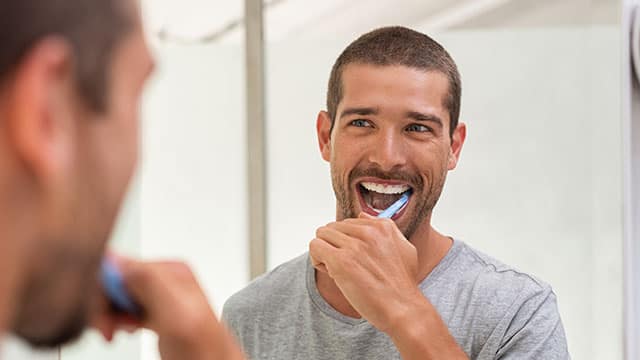The "eye teeth" in that colloquial phrase have an equally expressive nickname: canine teeth. Even their official clinical name is cool: cuspids. We'll give you the scoop on the origin of the term "cuspid" and its nicknames. Plus, we'll fill you in on eye teeth's unique function, problems that might arise with them, and how best to care for them.
Eye Teeth's Location in Your Mouth
One of the longest, strongest, most stable, and most prominent teeth in your mouth, eye teeth are, in particular, your upper canine teeth or cuspids. (Though there's some reference to calling your lower cuspids "eye teeth," as well.)
Looking in a mirror, smile for a mini-lesson:
- Notice on each side of your upper mouth your two large front teeth smack dab in the center. They and the teeth next door to them (your second teeth) are both called incisors.
- Your third teeth are your eye teeth, which you can easily spot because of their prominent point and sharp contour. This brings us to …
Origins of Cuspid Name and Nicknames
The term "cuspid" originates from "cuspis," the Latin word for point. That makes sense. And one look at long, pointed cuspids makes it easy to see why they're often called "canines." After all, they do resemble the fangs of dogs.
Did You Know? "Fangs" is yet another nickname for cuspids, aka canine teeth, aka eye teeth. At one point in Bram Stroker's iconic novel Dracula, the title character's dental anatomy is noted as "sharp, canine teeth lying over the red underlip." And the rest is horror-story, Halloween, and dental history.
But how did cuspids get the nickname "eye teeth"? One explanation is that they're located straight down under your eyes. (Mirror time again.) Or it could be because their roots are some of the longest in your mouth – though they aren't anatomically connected to the eyes.
It's thought that the phrase "give an eye tooth" came from sayings like "to give one's eye" or "to give one's right arm" for something of value. This colloquialism only emphasizes the importance of these special teeth!
Your Eye Teeth's Dental Roles
Eye teeth have remarkably long roots and prominent crowns – all the better to help support the structure of your mouth. Eyeteeth also play the following roles in your mouth:
- Primal Role: With their more pointed and tapered shape, your cuspids help you grip and pierce through food easily as you bite.
- Leadership Role: And though they're not front and center, your eye teeth take command in guiding all your teeth into the best position to bite down.
How to Keep Eye Teeth Healthy
Because of their unique shape, these teeth tend to be easier to keep clean. However, according to an article in the Dental Press Journal of Orthodontics, your upper canines might also be more susceptible to gum recession because of weakened bones. And gum recession can lead to eye teeth removal, perhaps changing your bite and definitely making it more difficult to eat.
Another contributor to gum recession is brushing too hard, which can irritate your gums. The best way to take care of your gums and eye teeth – and all of your teeth – is to get in the habit of brushing correctly and taking other oral care measures:
- Use gentle, short brush strokes with a soft-bristled brush that fits the size and shape of your mouth.
- Make sure to brush twice daily with fluoride toothpaste. And replace your toothbrush every three to four months for optimum cleaning power.
- Clean between your teeth daily – with floss or other interdental cleaners.
Since your gums don't regenerate, it's important to protect them, thus protecting your eye teeth and keeping them playing their essential roles. Taking care of this tender area around your eye teeth will contribute to a healthy, happy grin. We'd give our eye teeth to see that!
Oral Care Center articles are reviewed by an oral health medical professional. This information is for educational purposes only. This content is not intended to be a substitute for professional medical advice, diagnosis or treatment. Always seek the advice of your dentist, physician or other qualified healthcare provider.
ORAL HEALTH QUIZ
What's behind your smile?
Take our Oral Health assessment to get the most from your oral care routine
ORAL HEALTH QUIZ
What's behind your smile?
Take our Oral Health assessment to get the most from your oral care routine















